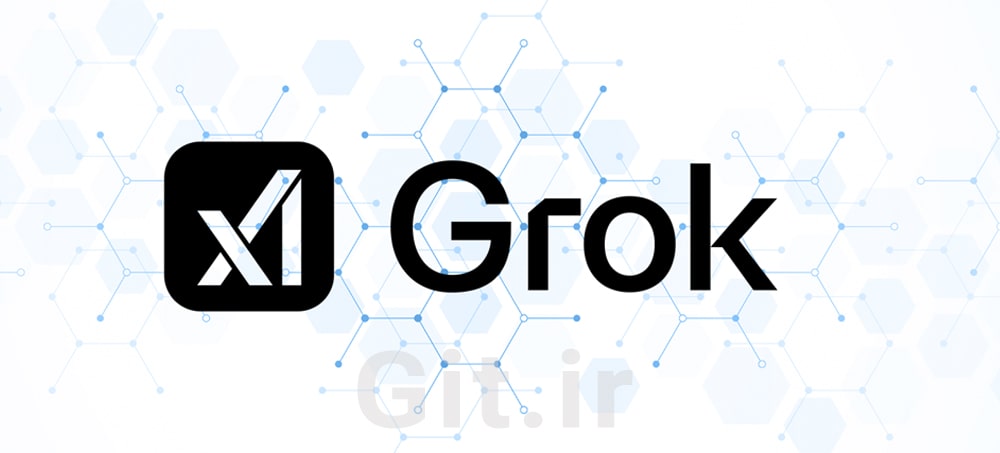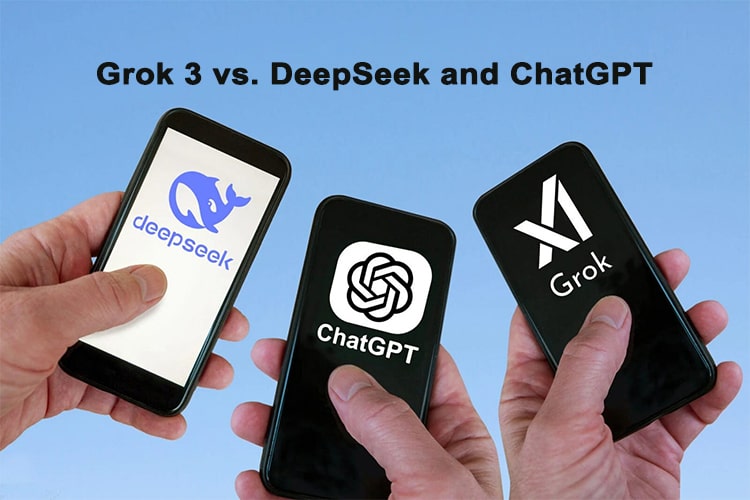Meet Grok: xAI’s AI for Research and Creativity

Artificial Intelligence (AI) has become a driving force for innovation and scientific discovery. Among these, Grok, created by xAI, stands out as a powerful and truth-seeking conversational tool, paving the way for a brighter future. Inspired by "The Hitchhiker's Guide to the Galaxy" and JARVIS, Tony Stark's assistant, Grok is designed to provide precise, unbiased, and practical answers—from complex scientific questions to everyday needs. This article offers a comprehensive exploration of Grok, from its history and versions to its applications, limitations, and future prospects, demonstrating why it is an ideal tool for researchers, developers, and technology enthusiasts.
🔶 Read More: What is Artificial Intelligence? Definition, Applications, and Types
What is Grok? History and xAI’s Mission
Grok, xAI’s pioneering AI, was created to accelerate human scientific discovery and enhance understanding of the universe. Founded by Elon Musk, xAI launched the Grok project in 2023 to deliver a truth-seeking and versatile tool. Unlike many AI models that produce generic responses, Grok is designed to offer logical, reasoning-based answers. xAI’s mission to advance human knowledge makes Grok a distinctive choice for users seeking deep and reliable insights.
How Does Grok Work?
Grok is built on a large language model (LLM) leveraging advanced neural network architecture. It analyzes user queries using natural language processing and reinforcement learning algorithms. In DeepSearch mode, Grok accesses up-to-date information from the web and X posts, delivering precise answers through iterative reasoning. The Think mode enables in-depth issue exploration. This cutting-edge technology makes Grok an efficient tool for solving scientific and everyday problems.
Types and Versions of Grok
The Grok family consists of three main versions, each marking a significant step in its evolution:
Grok 1: Introduced in 2023, the initial version focused on general conversations and basic question answering.
Grok 2: Released in early 2024, it featured improved reasoning and broader knowledge coverage.
Grok 3: The current version (late 2024), the most advanced model with features like Think and DeepSearch modes, elevating accuracy and efficiency to new heights.
Grok 3, as the latest version, is the focus of this article, but its advancements stem from the gradual evolution of the Grok family.
Key Features of Grok: What Sets It Apart?
Grok offers a suite of advanced capabilities that distinguish it from other AI tools:
Natural Language Processing: Understands and generates fluent responses in multiple languages.
Think Mode: Step-by-step reasoning for solving complex problems, ideal for scientific research.
DeepSearch Mode: Iterative web and X post searches for up-to-date answers.
Voice Mode: Natural voice conversations, currently available only on iOS.
Humorous Personality: Inspired by science fiction, making Grok a friendly and engaging companion.
These features make Grok a versatile tool for both beginners and professionals.
Accessing Grok: Platforms and Usage Options
Grok is available for free (with limited quotas) on the following platforms:
grok.com Website: A simple interface for quick access.
X Platform: Direct interaction with Grok, with higher quotas for premium subscribers.
Mobile Apps: iOS and Android apps with features like voice mode (iOS only).
The SuperGrok subscription on grok.com offers higher quotas. Grok is accessible globally without geographic restrictions, making it an excellent choice for researchers worldwide.
How to Get Started with Grok? A Step-by-Step Guide for Beginners
Starting with Grok is simple and user-friendly, even for those with no prior experience with AI tools. This step-by-step guide helps beginners get acquainted with Grok and leverage its powerful capabilities:
Create an Account: Visit grok.com or the X platform and sign up with an email or X account. The process is free and takes just a few minutes.
Explore the Interface: Upon logging in, you’ll encounter Grok’s straightforward interface. On the website or mobile app (iOS/Android), a text box allows you to input questions. Start with clear, specific queries like “What is the theory of relativity?” or “How do I write Python code for sorting?”
Use Advanced Features: Grok offers specialized modes to enhance your experience. For complex issues, activate Think mode for step-by-step reasoning. For up-to-date topics (e.g., scientific news), try DeepSearch mode, which gathers data from the web and X.
Voice Interaction (Optional): If using the iOS app, you can engage with Grok via voice mode. Simply enable the voice option and ask your question aloud—like chatting with a knowledgeable friend!
Upgrade for More Access: The free version of Grok has limited quotas. For more queries, consider the SuperGrok subscription on grok.com or X premium membership, which offer higher limits.
Tips for Best Results: Ask precise, specific questions (e.g., instead of “What is AI?” ask “How is AI used in medicine?”). Also, share feedback with Grok to improve future responses.
Applications and Capabilities of Grok
Grok is applicable in diverse domains:
Scientific Research: Analyzes complex data and solves problems in physics or biology.
Programming: Generates code, debugs, and optimizes for developers.
Education: Summarizes articles and explains concepts for students.
Everyday Life: Answers general questions, from history to cooking tips.
For example, Grok can assist a student in writing a paper or help a developer debug code.

Grok Compared to Competitors: Differences with ChatGPT and DeepSeek
Grok, particularly its advanced version (Grok 3), offers distinct features compared to prominent tools like ChatGPT (built by OpenAI) and DeepSeek (a Chinese open-source AI). This comparison helps users better understand Grok’s strengths and differences:
Truth-Seeking and Deep Reasoning: Grok is designed to provide unbiased, logic-based answers. Its Think mode enables step-by-step analysis of complex issues. For instance, if a researcher aims to solve a quantum mechanics problem, Grok offers precise reasoning and credible references, while ChatGPT may provide a more general response.
Up-to-Date and Dynamic Search: Grok’s DeepSearch mode uses the web and X posts to deliver current information, making it ideal for evolving topics (e.g., scientific news). DeepSeek also offers specialized search, but Grok balances general and scientific data effectively.
xAI’s Scientific Mission: Unlike ChatGPT, which focuses on general conversations, or DeepSeek, optimized for specialized analysis, Grok is built to accelerate scientific discovery. This makes it an ideal tool for researchers and academics.
Unrestricted Access: Unlike ChatGPT, which may require VPNs in some regions, Grok is accessible globally. DeepSeek offers similar access, but Grok excels with a simpler interface and X platform support.
Balanced Applications: ChatGPT excels in creative content generation (e.g., storytelling), while DeepSeek is strong in coding and specialized data analysis. Grok strikes a balance, capable of summarizing a scientific paper or answering a general history question.
In summary, Grok’s blend of truth-seeking, advanced reasoning, and easy access makes it a unique option that effectively meets both general and specialized needs, while its competitors excel in specific domains.
🔶 Read More: Introduction to ChatGPT and How to Use It
🔶 Read More: What is DeepSeek? All About the Chinese AI
Challenges and Limitations of Grok
Despite its capabilities, Grok has limitations:
Free Quota: Free users face limits on the number of requests.
Voice Mode: Available only on iOS.
Specialized Topics: In highly niche domains, additional searches may be needed.
xAI is continuously working to address these limitations.
The Future of Grok: What Innovations Lie Ahead?
Grok is poised for major transformations, with xAI holding ambitious plans for its future. Given xAI’s mission to accelerate scientific discovery, Grok is expected to become a leading AI tool in the coming years. Potential innovations include:
Multimedia Capabilities: xAI is developing features like image analysis, visual content generation, and even video processing. For example, Grok could analyze scientific charts or review medical images for preliminary diagnostics.
Integration with Scientific Tools: Grok could integrate with data analysis software (e.g., MATLAB or Python) or scientific databases (e.g., PubMed) to assist researchers with simulations and complex analyses.
Emerging Domains: Grok has the potential to impact robotics (e.g., guiding research robots), medicine (disease diagnosis), and education (personalized courses). For instance, Grok could become a virtual assistant for doctors, analyzing patient data.
Responsible AI: xAI is committed to developing Grok ethically, reducing biases and enhancing response transparency to build user trust.
Conclusion: Why is Grok Your Future AI Tool?
Grok, with its advanced capabilities, user-friendly interface, and commitment to truth-seeking, is more than an AI tool—it’s a partner for exploring knowledge and innovation. From solving scientific problems and coding to answering everyday questions, this tool is designed for students, researchers, developers, and tech enthusiasts. Features like Think and DeepSearch modes make Grok a standout compared to competitors like ChatGPT and DeepSeek. With free access on grok.com, the X platform, and mobile apps, getting started with Grok is easy. Its future, with xAI’s innovations from multimedia analysis to scientific tool integration, is bright and exciting. Try Grok now and experience the power of truth-seeking AI in your hands!
Please Log in to leave a comment.